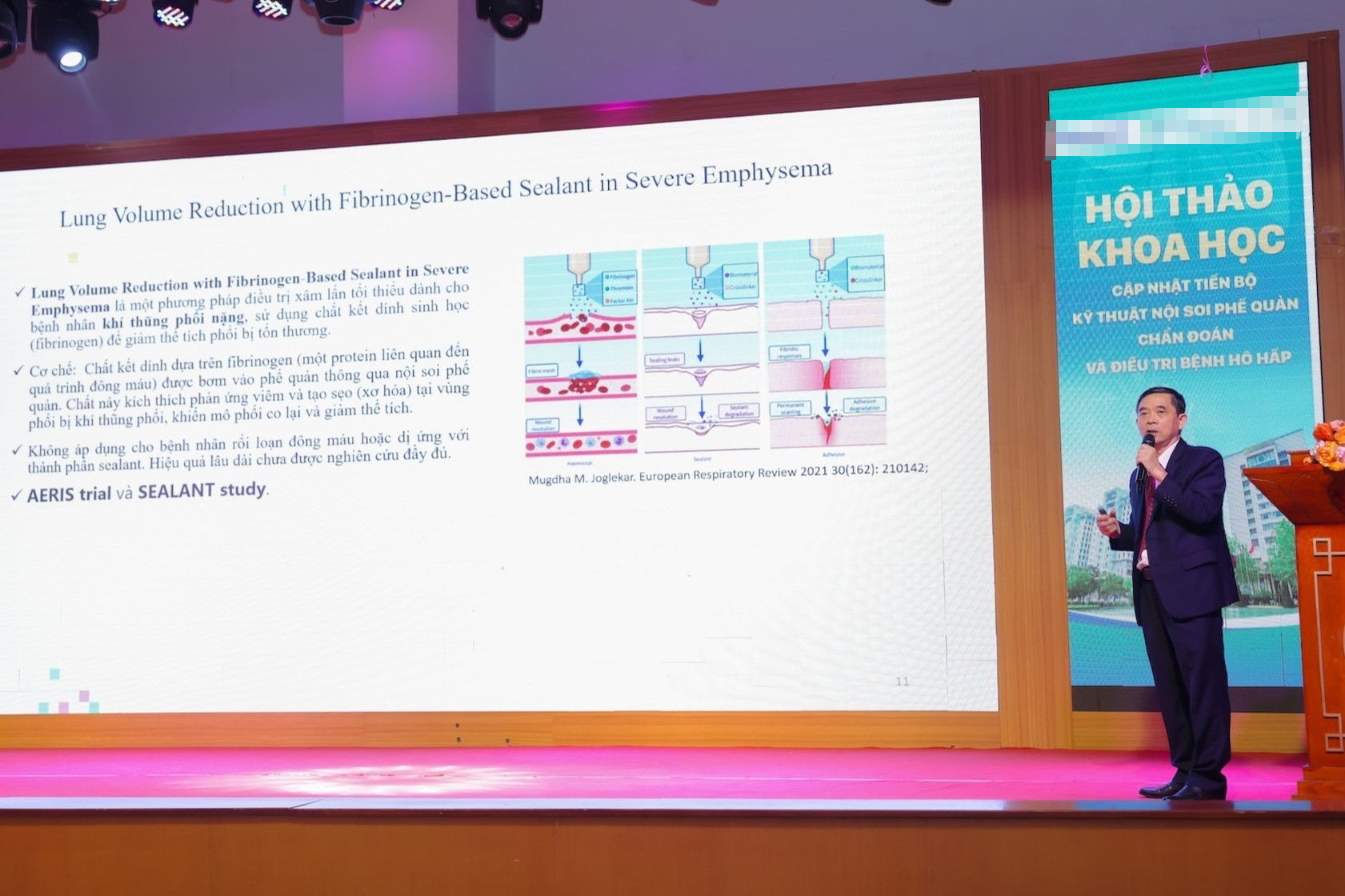
At a June 8 conference on bronchoscopy techniques in the diagnosis and treatment of respiratory diseases, organized by Phuong Dong General Hospital, experts warned that the burden of respiratory diseases in Vietnam is increasing rapidly.
COPD is the third leading cause of death globally. In Vietnam, its prevalence is 10.3 percent, the highest in the Asia-Pacific region. Preventive medications for COPD are mostly covered by health insurance, but for uninsured patients, monthly preventive treatment costs around VND1.5 million. Complications can escalate treatment costs by 13 times, exceeding VND200 million annually.
Lung cancer also records more than 24,000 new cases each year in the country, ranking third in the number of cases and second in the number of deaths among cancers. Meanwhile, the average rate of bronchial asthma is about 3.9 percent of the Vietnamese population, equivalent to about 4 million people, with 3,000 - 4,000 deaths each year.
Associate Professor Tran Van Ngoc, Chair of the HCM City Respiratory Association, said bronchoscopy is opening up a new era for diagnosing and treating respiratory diseases. This technique is widely prescribed for conditions like cancer, COPD, and even asthma. In cases of difficult-to-control asthma, endoscopy supports to burn parasympathetic nerves, reducing bronchial spasms.
"Bronchoscopy is only contraindicated for patients taking anticoagulants, after myocardial infarction, or suffering from respiratory failure," Ngoc said.
Bronchoscopy not only helps determine benign or malignant lesions, but also allows use of laser treatment of lung tumors, placement of tracheal stents, and improvement of airway obstruction. Modern technologies such as endobronchial ultrasound (EBUS) and peripheral lesion localization software are improving accuracy and reducing complications in biopsy.
In Vietnam, EBUS-TBNA (transbronchial needle aspiration guided by ultrasound), a novel, minimally invasive method to sample peribronchial masses using real-time guidance, is considered the “gold standard” for diagnosing mediastinal tumors and lymph nodes, previously requiring invasive surgery.
Dr Dinh Van Luong, Director of the National Lung Hospital said that bronchoscopy is indispensable throughout the process of diagnosis, treatment, and post-lung transplant monitoring. The hospital has successfully performed seven lung transplants, with daily post-operative bronchoscopy to assess lesions, monitor airway conditions, and collect microbiological samples to manage infection risks.
AI technology is being applied to analyze bronchoscopy images, enabling early detection of abnormalities and aiding precise diagnosis of lung cancer and rare diseases. Modern bronchoscopy is expected to remain pivotal in effectively managing and treating respiratory diseases in Vietnam.
Vo Thu